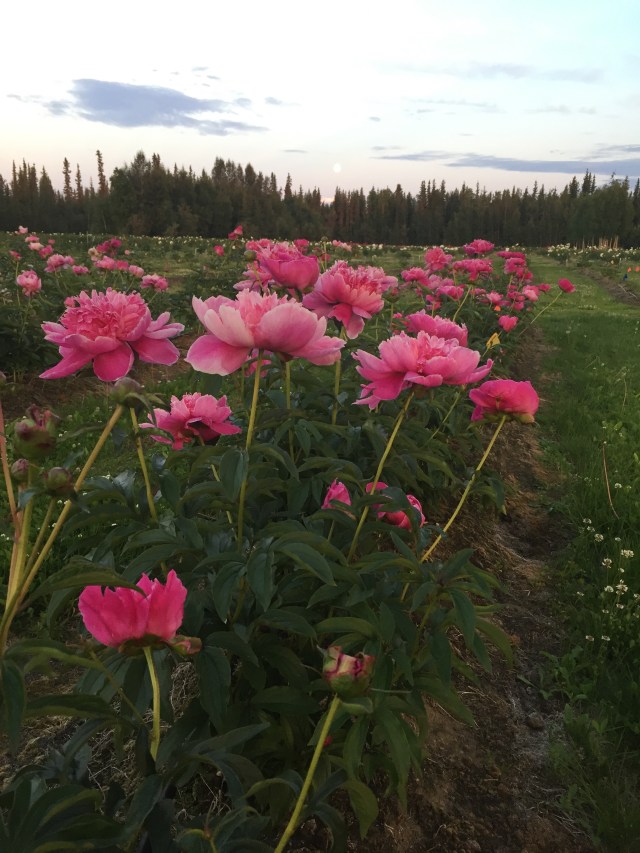
THE ATLANTIC
A little more than a decade ago, Ron Illingworth and his wife, Marji, planted 25 peony roots on their family farm in North Pole, Alaska. They did it on a whim, really, curious whether the bright, ruffled blossoms would thrive alongside the runner beans, peas, and tomatoes they sold at the local farmers market. A horticulture-professor friend of theirs had planted some test plots on the grounds of the University of Alaska Fairbanks, and she was looking for some more data on their hardiness in subarctic conditions. Could peonies become a commercially viable export crop?
The next year, Ron and Marji had 50 roots. A year later, 100. Now, the couple has 15,000 roots in ground, with the goal of reaching 18,000. Their company, North Pole Peonies, will ship close to 30,000 stems to the continental United States this year for hotel floral displays and showy wedding bouquets. “We started with just a few back here, and now everything you see is peonies,” says Marji.
Alaska is home to 200 commercial peony farmers, clustered in the three hot spots around its center and south-central coast. The state isn’t known for its agricultural exports, but peonies have quickly become a cash crop for its entrepreneurial farmers. Last year, these growers shipped more than 200,000 stems to local, state, and international markets, including Taiwan, Canada, and Korea. Ron Illingworth, who is also president of the Alaska Peony Growers Association, expects it will be closer to 1 million by 2020.
But as average temperatures in Alaska increase due to greenhouse-gas emissions, the state’s peony farmers are left wondering if their new enterprise may be nipped in the bud. Peonies are grown around the world in a variety of climates, but they’re typically available only for a short time, from late spring to early summer. That gives Alaskan growers a competitive advantage: While peony farms in Chile, the Netherlands, and Canada have generally peaked by May and June, Alaska’s late summers and midnight sun means near-Arctic farmers have peonies available in July and August. This advantage could disappear, however, if climate change shifts the Alaska season so that it overlaps with growers in the other parts of the world.
“The biggest thing that we’re worried about right now is what’s happening with global warming,” says Illingworth.
Read more at The Atlantic.





Leave a Reply